
Enchanter’s nightshade
Since moving to Argyll I’ve come across lots of wild flowers I’d never even heard of before. This is largely thanks to Colin, who tends to notice plants that are new to him; many of them are delicate rather than spectacular, and you could easily walk past them without a second glance.
Just recently, and not too far from our house, we discovered one with the most bewitching name I’ve ever heard. Enchanter’s nightshade… what kind of fairytale flower is this? It seems almost too magical to be true. I suspected that just gazing at it might transport me into another realm.
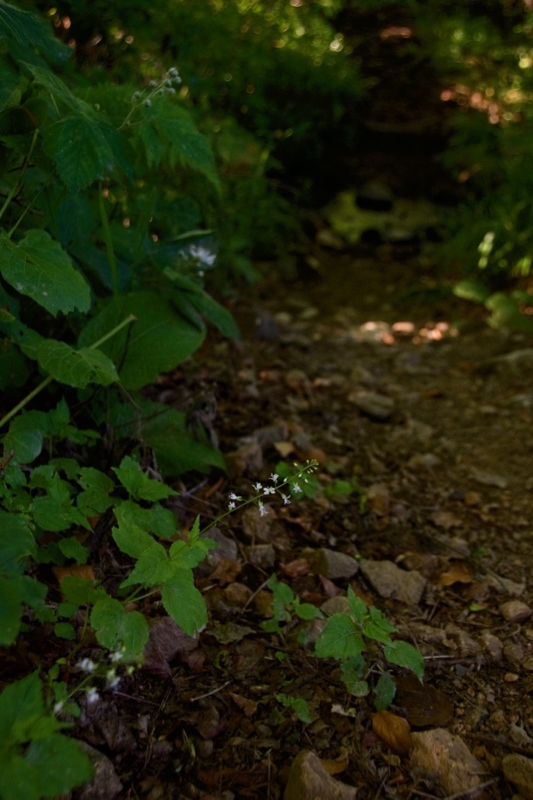 Quite fittingly, it turns out that this is a shy inhabitant of dark, damp places. We found it growing in almost permanent shade, beneath some trees on the bank of a stream. Borne on a tall, slender stem, the tiniest white florets dance like butterflies; below them, heart-shaped leaves grow in opposing pairs, their margins slightly toothed. As the flowers open, the stem will get progressively longer, reaching a height of about two feet. Once they have been pollinated by insects, the flowers will produce small round seed cases, covered with tiny bristles.
Quite fittingly, it turns out that this is a shy inhabitant of dark, damp places. We found it growing in almost permanent shade, beneath some trees on the bank of a stream. Borne on a tall, slender stem, the tiniest white florets dance like butterflies; below them, heart-shaped leaves grow in opposing pairs, their margins slightly toothed. As the flowers open, the stem will get progressively longer, reaching a height of about two feet. Once they have been pollinated by insects, the flowers will produce small round seed cases, covered with tiny bristles.
“Inchanters Night-shade… groweth in obscure and darke places, about dung-hills, and untoiled grounds, by path-waies and such like.”
John Gerard, Herball, or Generall Historie of Plantes, 1597
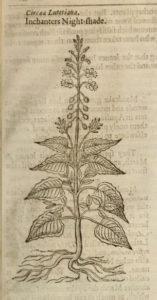
Flowering from June to August, enchanter’s nightshade is widespread throughout Britain, although it appears to be less common in the north. It’s also found in other parts of Europe, and is naturalised in the US. Despite the fact that 16th century herbalist John Gerard also calls it ‘Binde-weed Nightshade’, it has no link with nightshades at all and is actually a member of the willowherb family. The plant’s Latin name, Circaea lutetiana, comes from Circe, the enchantress of Greek mythology whose woodland dwelling was on the island of Aeaea. In Homer’s Odyssey, she casts a spell over Odysseus’ crew, turning them into swine. The second part of the name, lutetiana, comes from the Roman city of Lutetia, the predecessor of modern-day Paris. The connection with Paris is puzzling, but some sources offer the explanation that it was once known as ‘witch city’.
And what unseen power does it possess? Somewhat disappointingly, it is not reputed to hold any magical properties, and on a more earthly level it seems to have little value as a herbal remedy. John Gerard admits that “there is no use of this herbe either in Physicke or Surgerie, that I can reade of…” and suggests that it can even become a nuisance to gardeners: “…when it hath once taken fast rooting, it can hardly with great labour be rooted out or destroied.” But in his Herball, enchanter’s nightshade appears immediately before mandrake, a toxic plant whose dark magic was held in dread. Gerard goes to some length to explain that enchanter’s nightshade and mandrake have been confused in the minds of many people, possibly because of their shared connection with Circe, the sorceress.
So the enchantment is purely in the eye of the beholder… but perhaps that is where its true magic lies!
Reference:
Flora Britannica by Richard Mabey
Collins’ Complete British Wild Flowers
John Gerard’s Herball, or Generall Historie of Plantes (1597)
Norfolk Wildlife Trust
Witchwood Wild
Images © Colin & Jo Woolf

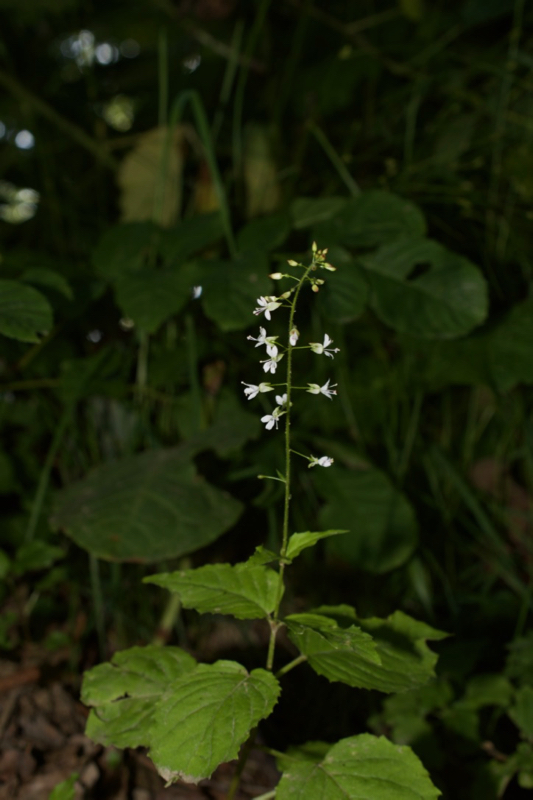
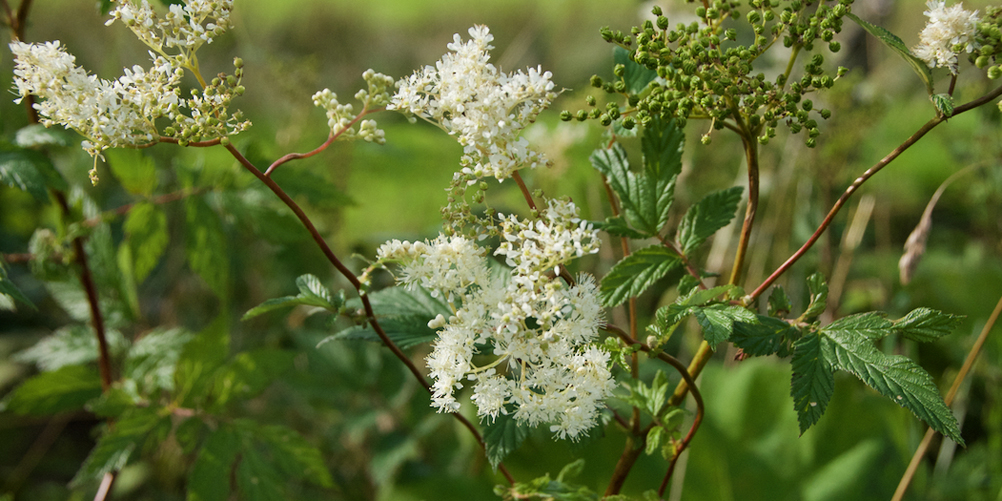
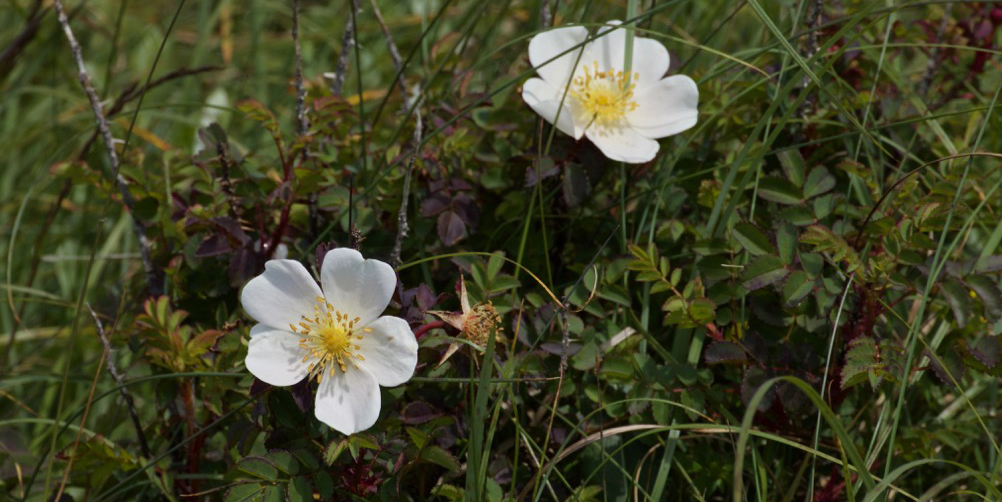
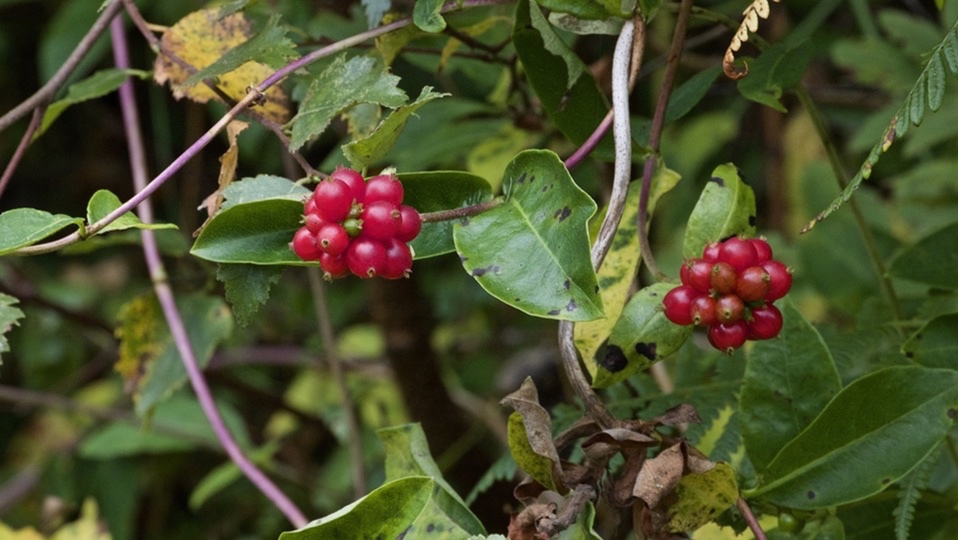
10 Comments
Kati Waitzmann
The beautiful name alone is a psychological asset – ‘Enchanter’s nightshade’!? I will look out for that little plant from now on. Thank you.
Jo Woolf
Yes, isn’t it? You feel as if you should benefit just by seeing it!
Jim Rule
Even more bewitching than usual!
Jo Woolf
Haha, yes, very true!
Mary Smith
I see this a lot but didn’t know its name until now.
Jo Woolf
I don’t think I remember seeing it before, but it’s easily overlooked! I was so pleased to find out about it.
Sandra
I must have seen this often: seen without seeing. I’ll be looking properly from now on
Jo Woolf
It’s quite possible, as it’s not the most conspicuous plant! I’ll be looking for it myself every summer too!
montucky
Interesting plant. I enjoy the mystery surrounding it.
Jo Woolf
Yes, so do I! I’m seeing much more of it now – as often happens!